The human iris contains remarkable patterns that, according to iridology practitioners, can reveal insights about our overall health. The Graphique d'iridologie des yeux gauche serves as a specialized map for analyzing the left iris, which differs significantly from its right counterpart. While both eyes provide valuable information, the left iris specifically corresponds to the left side of the body and certain organ systems. This comprehensive guide explores the unique characteristics of left iris topography, its interpretation through specialized charts, and how practitioners use this knowledge in holistic health assessment.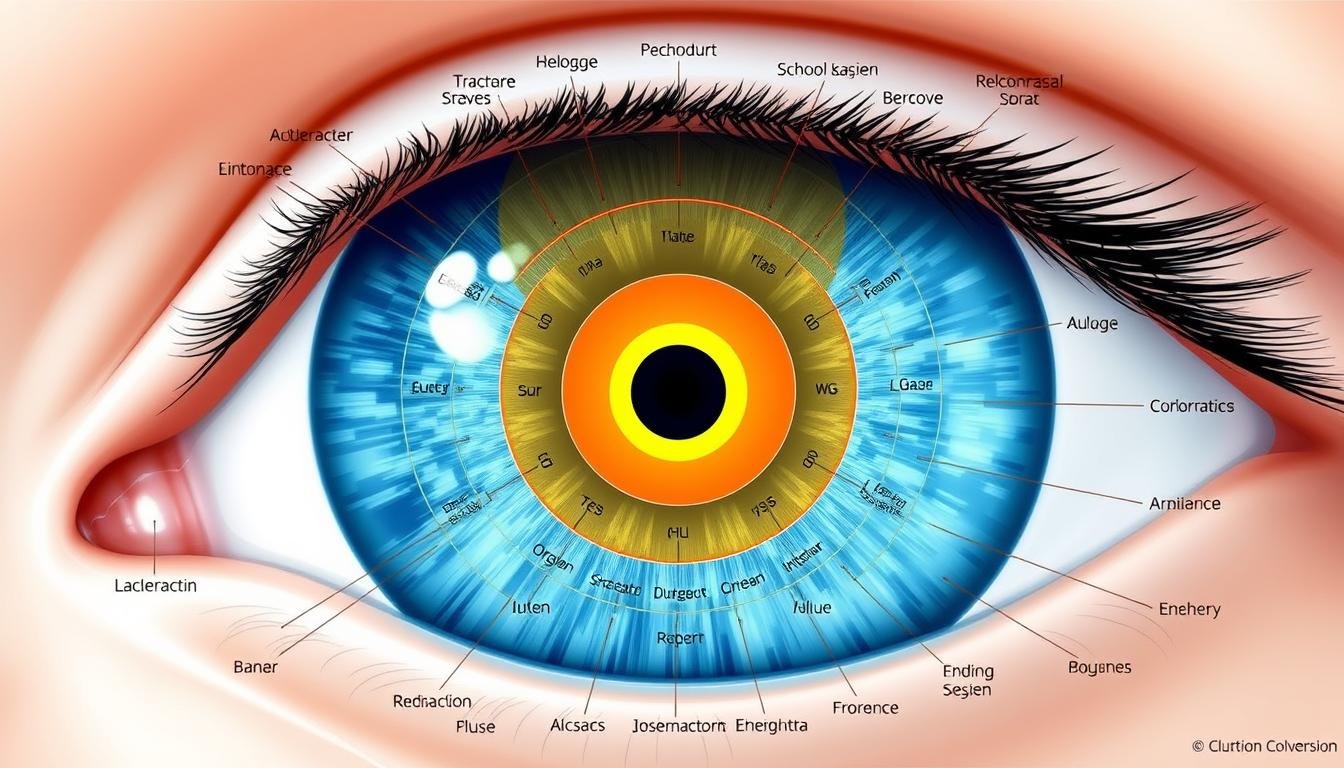
Comprehensive Graphique d'iridologie des yeux gauche showing organ correlations and iris zones
Comprendre le Graphique d'iridologie des yeux gauche
Iridology is based on the premise that the iris reflects the condition of various organs and systems throughout the body. The Graphique d'iridologie des yeux gauche specifically maps how the left iris corresponds to organs predominantly on the left side of the body. This specialized chart divides the iris into zones that represent different anatomical regions, creating a topographical map that practitioners use to identify potential health concerns.
Key Components of Graphique d'iridologie des yeux gauche Mapping
Le Graphique d'iridologie des yeux gauche typically divides the iris into concentric rings and pie-shaped sectors. Each section corresponds to specific organs or body systems. Understanding these divisions is essential for accurate interpretation:
- Zone pupillaire: The area immediately surrounding the pupil, representing the digestive system and stomach
- Zone ciliaire: The middle ring, corresponding to organs like the liver, spleen, and kidneys
- Couronne de nerf autonome: The boundary between the pupillary and ciliary zones, indicating autonomic nervous system function
- Iris Collarette: A circular ridge that divides the iris into inner and outer zones
- Zone périphérique: The outermost ring, representing the skin, lymphatic system, and circulation
| Position d'horloge |
Left Iris Organ Correspondence |
Significance in Iridology |
| 12:00-1:30 |
Brain, Cerebral Circulation |
Mental function, cognitive health |
| 1:30-3:00 |
Throat, Thyroid, Left Lung |
Respiratory and endocrine function |
| 3:00-4:30 |
Heart, Spleen |
Cardiovascular and immune health |
| 4:30-6:00 |
Stomach, Pancreas |
Digestive and metabolic function |
| 6:00-7:30 |
Small Intestine, Colon |
Digestive health and absorption |
| 7:30-9:00 |
Reproductive System, Bladder |
Urogenital health |
| 9:00-12:00 |
Spine, Lymphatic System |
Structural support and immunity |
Anatomical Differences in Left Iris Topography
The left iris has distinct topographical features that differentiate it from the right iris. These differences are crucial for accurate interpretation using a Graphique d'iridologie des yeux gauche:
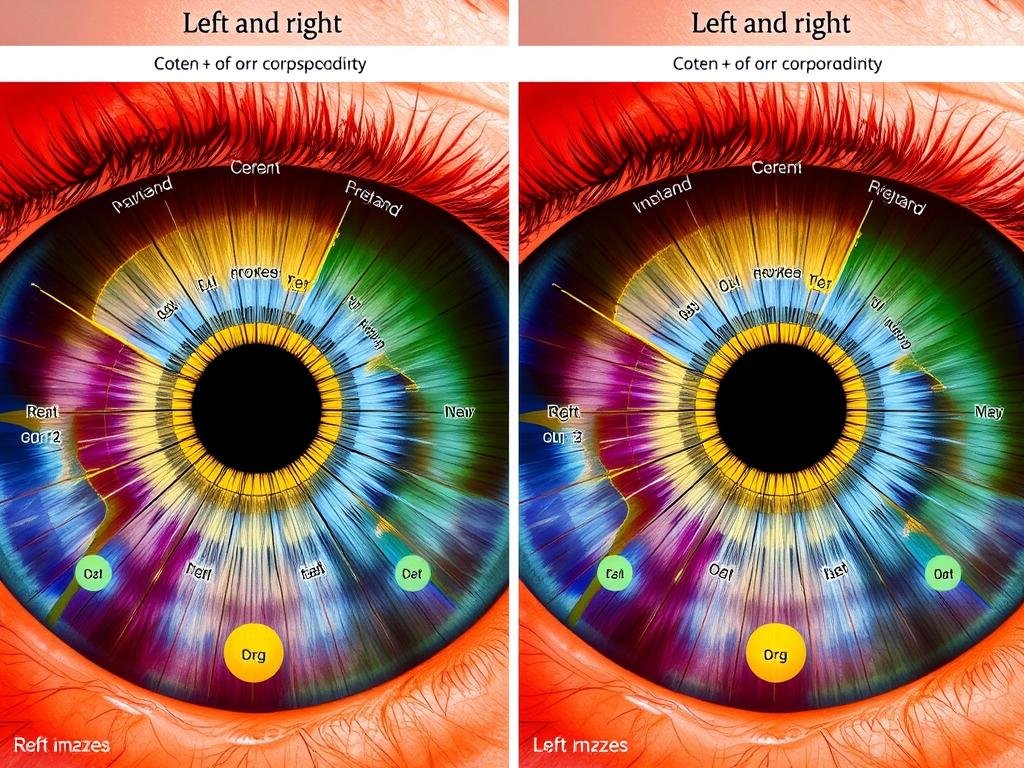
Comparative topography between left and right iris charts showing key differences
Left Iris Specific Correlations
- Heart and cardiovascular system
- Spleen and lymphatic function
- Poumon gauche et bronchi
- Stomach and digestive organs
- Left kidney and adrenal gland
Right Iris Specific Correlations
- Liver and gallbladder
- Right lung and bronchi
- Right kidney and adrenal gland
- Ascending colon
- Appendix
Download Your Comprehensive Left Eye Iridology Chart
Get our detailed, printable Graphique d'iridologie des yeux gauche with complete organ correlations and interpretation guide. Perfect for practitioners and those interested in understanding their iris patterns.
Télécharger le graphique gratuit
Decoding Graphique d'iridologie des yeux gauche Patterns
Interpreting the left iris requires understanding both the location and appearance of various markings. The Graphique d'iridologie des yeux gauche provides a framework for analyzing these patterns, but practitioners must also recognize specific indicators of potential health concerns.
Sector Analysis: Clock Positions in Graphique d'iridologie des yeux gauche
Le Graphique d'iridologie des yeux gauche often uses a clock-face analogy to map different sectors of the iris. This approach provides a standardized way to communicate findings and locate specific areas of interest:

Clock position reference system used in Graphique d'iridologie des yeux gauche analyse
Signes structurels
- Lacunes: Enclosed darkened areas indicating chronic weakness
- Cryptes: Small, dark indentations suggesting acute conditions
- Rayon solaire: Spoke-like lines radiating from the pupil
Indicateurs de couleur
- Blanc: Inflammation or irritation
- Yellow: Kidney or urinary system issues
- Orange/Brown: Liver or gallbladder concerns
Texture Patterns
- Dense: Congestion in the corresponding organ
- Ouvrir: Potential underactivity or weakness
- Wavy: Nervous system sensitivity
Comparative Topography: Left vs. Right Iris Features
Understanding the differences between left and right iris patterns is essential for comprehensive iridology analysis. The Graphique d'iridologie des yeux gauche highlights these distinctions:
| Fonctionnalité |
Left Iris Interpretation |
Right Iris Interpretation |
Clinical Significance |
| Couronne de nerf autonome |
Often more pronounced in left iris |
Usually more regular in pattern |
Indicates stress response differences |
| Stomach/Digestive Zone |
Reflects stomach and pancreas |
Reflects liver and gallbladder |
Digestive function assessment |
| Chapelet lymphatique |
Connected to spleen function |
Connected to liver detoxification |
Immune and detoxification capacity |
| Jante de scurf |
Often thicker in left iris |
May be more irregular |
Skin elimination function |
| Circulatory Zone |
Heart and arterial circulation |
Venous circulation |
Cardiovascular health assessment |
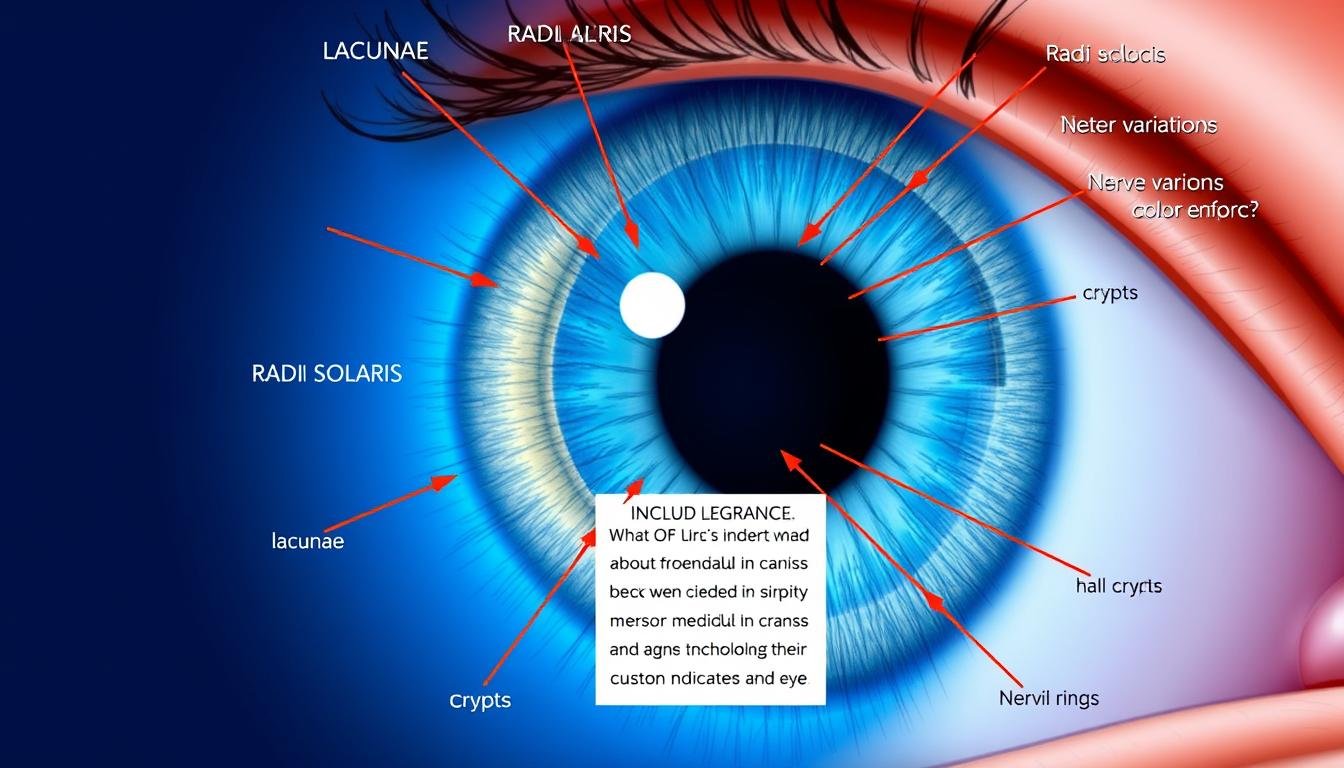
Common iris markings and their interpretations according to Graphique d'iridologie des yeux gauche analyse
“The left iris provides unique insights into the function of organs predominantly on the left side of the body. Its patterns often reveal conditions related to the heart, spleen, and stomach that may not be as evident in the right iris examination.”
– Dr Bernard Jensen, pionnier de l'iridologie moderne
Applications cliniques de Graphique d'iridologie des yeux gauche
Practitioners utilize the Graphique d'iridologie des yeux gauche as a non-invasive assessment tool to identify potential health concerns and guide holistic treatment approaches. While iridology remains controversial in conventional medicine, many alternative health practitioners find value in its applications.
Diagnostic Markers in Graphique d'iridologie des yeux gauche Analyse
Le Graphique d'iridologie des yeux gauche helps practitioners identify specific markers that may indicate potential health issues:

Diagnostic markers visible in left iris analysis using Graphique d'iridologie des yeux gauche
What can the left iris reveal about cardiovascular health?
The left iris, particularly in the 3:00-4:30 clock position, corresponds to the heart and cardiovascular system. According to iridology practitioners, a ring around this area may indicate increased blood pressure or cardiovascular stress. White markings might suggest inflammation, while dark spots could indicate chronic issues. Regular assessment using a Graphique d'iridologie des yeux gauche may help track changes in these indicators over time.
How does the left iris reflect digestive function?
The stomach and digestive organs are primarily represented in the 4:30-6:00 position of the left iris. Discolorations around the pupil can indicate problems with the digestive system. Practitioners using a Graphique d'iridologie des yeux gauche look for specific markings like radii solaris (spoke-like lines) that may suggest digestive inflammation, or lacunae (enclosed dark areas) that could indicate chronic digestive weakness.
Can the left iris show lymphatic system health?
Yes, the lymphatic system is represented in multiple areas of the left iris, particularly in the 9:00-12:00 region. The “lymphatic rosary,” a series of small white dots forming a ring in the iris, is often assessed using the Graphique d'iridologie des yeux gauche. A pronounced lymphatic rosary may indicate lymphatic congestion or immune system challenges, according to iridology principles.
Études de cas : Graphique d'iridologie des yeux gauche Interpretations
Examining real-world applications of the Graphique d'iridologie des yeux gauche provides insight into how practitioners use this tool in clinical settings:
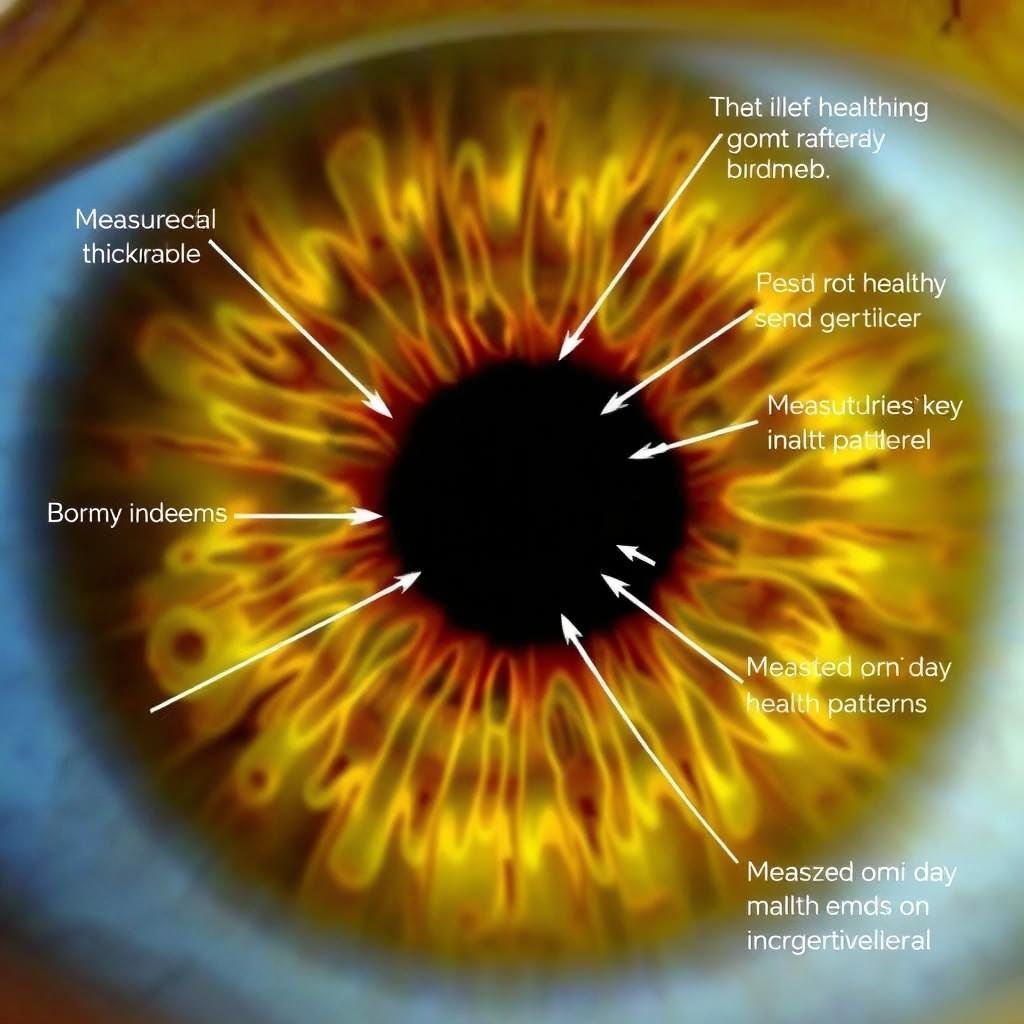
Case study: Left iris analysis revealing digestive and lymphatic patterns
Case Study: Digestive Health Assessment
A 45-year-old female presented with chronic digestive complaints. Analysis using the Graphique d'iridologie des yeux gauche revealed:
- Pronounced lacunae in the stomach zone (4:30-6:00 position)
- Radii solaris extending from the pupil toward the pancreatic region
- Yellowish discoloration in the intestinal area
These findings correlated with the patient’s reported symptoms of acid reflux and pancreatic insufficiency, which were later confirmed through conventional testing.
Important Considerations for Graphique d'iridologie des yeux gauche Analyse
While iridology can provide interesting insights, it should be considered complementary to, not a replacement for, conventional medical diagnosis. The scientific community remains skeptical about iridology’s diagnostic validity, as research has not consistently verified its claims. Always consult with qualified healthcare providers for medical concerns.
Reliability of Different Iridology Assessment Methods
3.7
Note globale
Left Eye Iridology Chart Analysis
3.9/5
Photographie numérique de l'iris
4.2/5
Traditional Flashlight Examination
3.0/5
Correlation with Clinical Findings
3.5/5
Book Your Professional Iridology Consultation
Discover what your left iris reveals about your health with a comprehensive analysis using our detailed Graphique d'iridologie des yeux gauche. Our certified iridologists provide personalized assessments and wellness recommendations.
Schedule Consultation
Practical Applications and Self-Assessment
While professional analysis is recommended for comprehensive iridology assessment, understanding basic principles of the Graphique d'iridologie des yeux gauche can help individuals become more aware of potential health patterns.
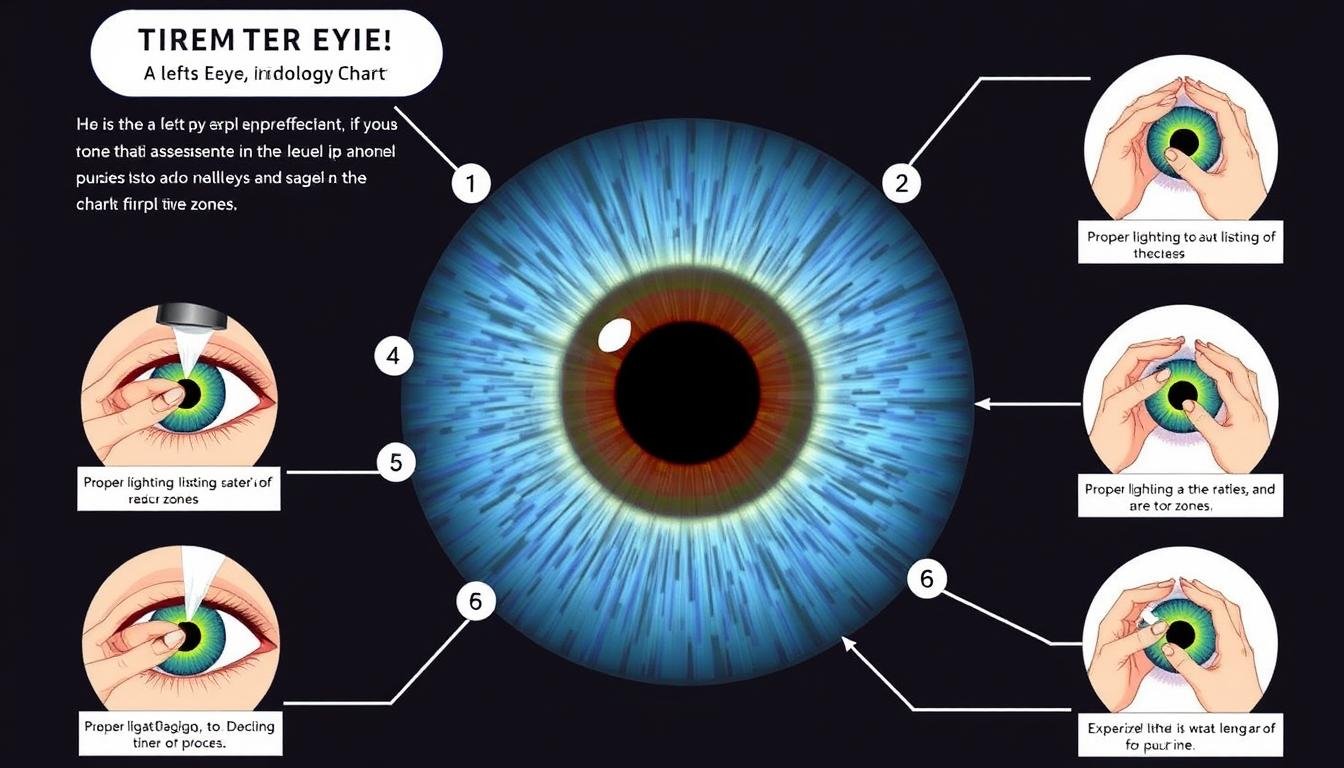
Self-assessment guide using Graphique d'iridologie des yeux gauche for beginners
Basic Self-Assessment Steps
- Éclairage approprié: Use natural daylight or a bright, diffused light source
- Outils: A small magnifying glass or smartphone with macro lens capability
- Photography: Take clear, close-up photos of your left iris
- Chart Reference: Compare with a Graphique d'iridologie des yeux gauche
- Documentation: Note any unusual markings, colors, or patterns
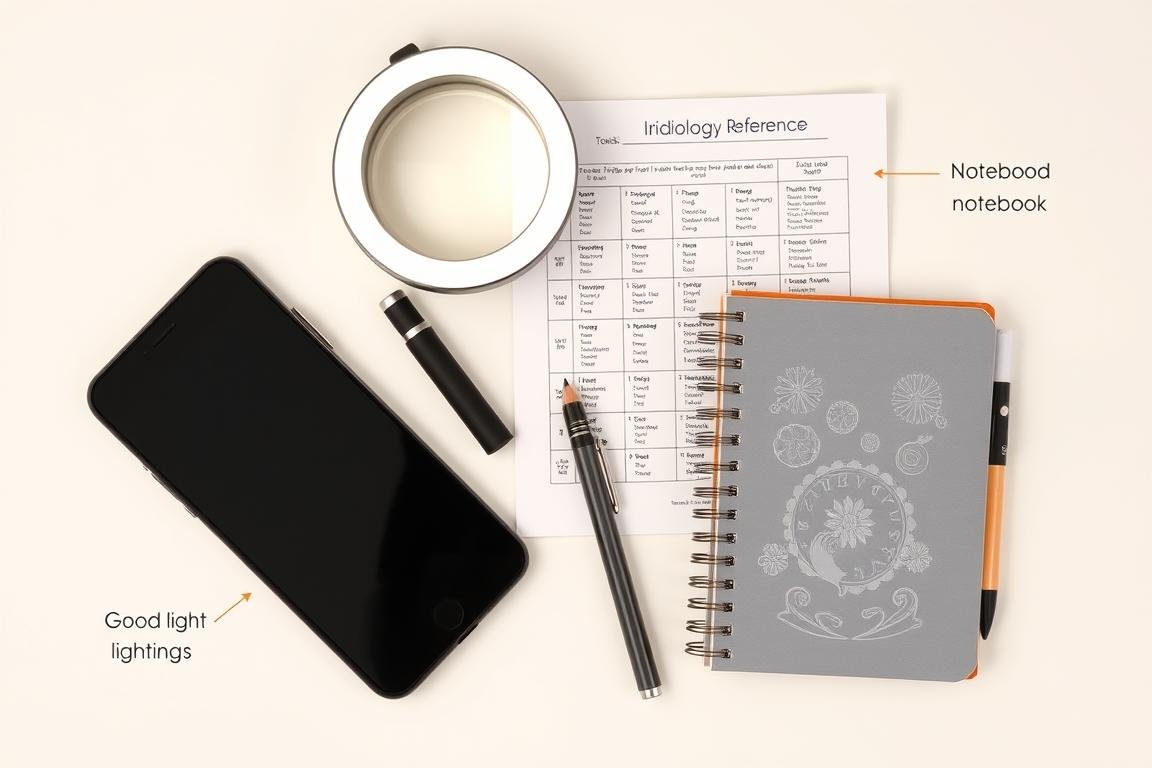
Essential tools for basic iridology self-assessment
Self-Assessment Limitations
Self-assessment using a Graphique d'iridologie des yeux gauche should be considered educational rather than diagnostic. Many iris markings require professional interpretation, and changes in iris appearance can be subtle. Always consult with qualified healthcare providers for any health concerns.
| Common Left Iris Observation |
Potential Indication |
Recommended Wellness Support |
| Anneau blanc autour d'Iris (Arcus sénilis) |
Possible cholesterol imbalance |
Heart-healthy diet, regular cardiovascular exercise |
| Brown spots in liver/stomach area |
Potential digestive or liver stress |
Digestive herbs, liver-supporting foods |
| Radial lines in heart zone |
Circulatory system stress |
Cardiovascular support, stress management |
| Lymphatic rosary (white dots in circle) |
Congestion du système lymphatique |
Lymphatic massage, movement, hydration |
| Darkened areas in kidney zone |
Kidney or adrenal fatigue |
Adrenal support, proper hydration |
Conclusion: The Value of Graphique d'iridologie des yeux gauche Analyse
Le Graphique d'iridologie des yeux gauche provides a fascinating framework for understanding potential health patterns through iris analysis. While scientific validation remains limited, many holistic practitioners and individuals find value in the insights iridology can offer as part of a comprehensive wellness approach.
Whether you’re a healthcare practitioner interested in adding iridology to your assessment tools or an individual curious about what your iris might reveal, understanding the principles of the Graphique d'iridologie des yeux gauche opens a window into the intricate connections between the iris and overall health. Remember that iridology is best used as a complementary tool alongside conventional medical care, not as a replacement for professional diagnosis and treatment.

Professional iridology assessment using advanced digital imaging and Graphique d'iridologie des yeux gauche analyse
Commencez votre voyage en iridologie aujourd'hui
Explore the fascinating world of iris analysis with our comprehensive resources. Download our detailed Graphique d'iridologie des yeux gauche, book a professional consultation, or join our upcoming webinar on iridology basics.






















